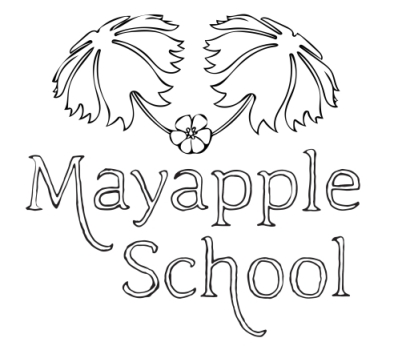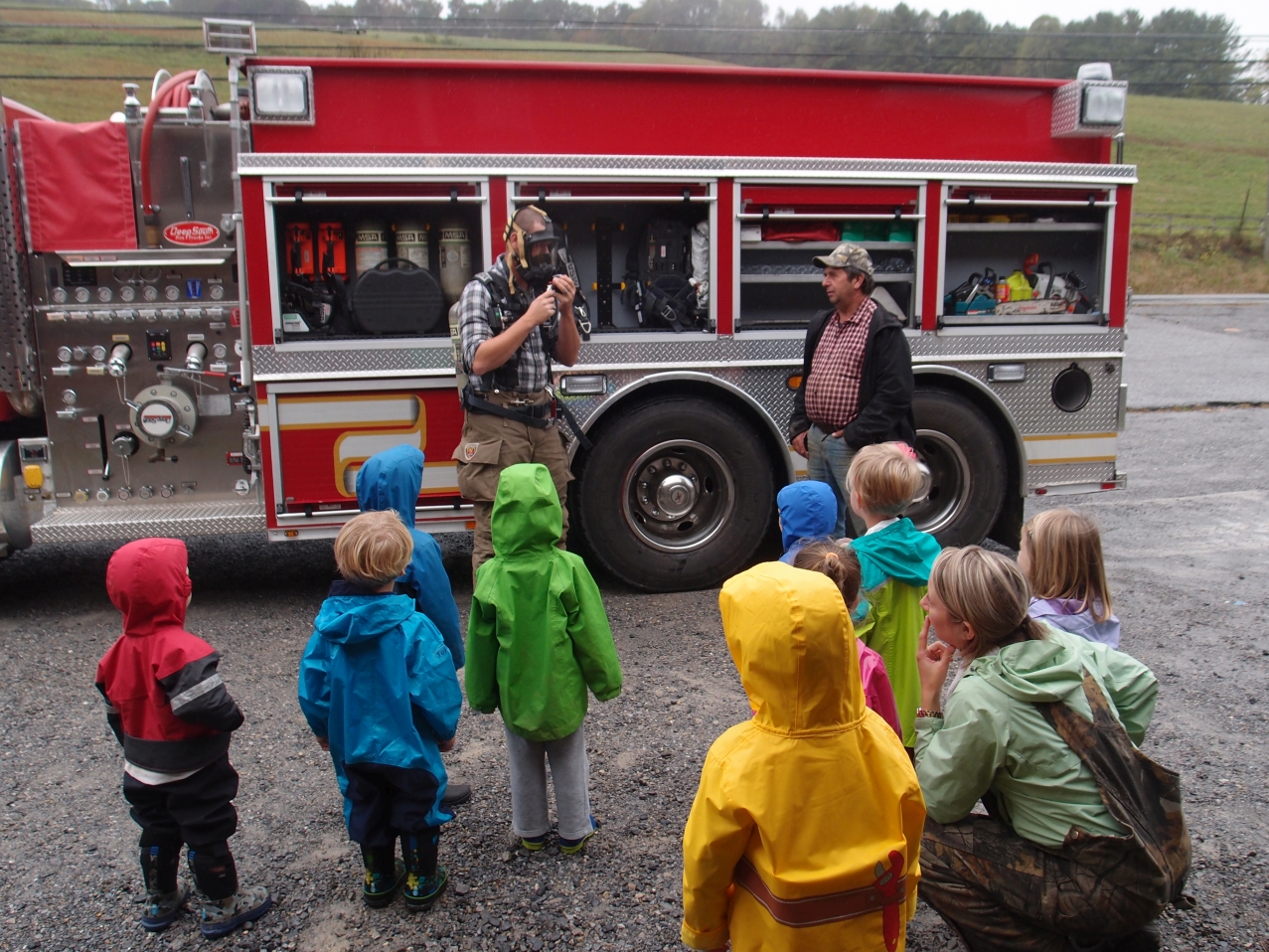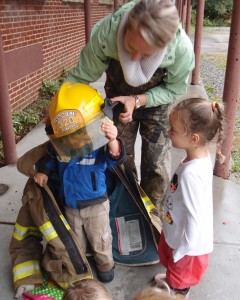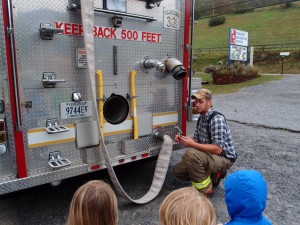In the last blog post, I introduced our fantastic child-built fire truck to readers. You can read that post here. Already caught up? Read on:
Our fire truck has been at the heart of hours of pretend play in our classroom. In fact, there isn’t a single child in our classroom that hasn’t spent some quality make-believe time in there. There’s more to this truck than meets the eye, and in the next few posts, I’d like to share just what that “more” is. Not into fire trucks? Don’t worry. This recipe yields creative, imaginative, dramatic play no matter what the subject matter is.
Our recipe has three parts:
- building background knowledge
- setting the stage and effectively using and making props
- planning, communicating, and evaluating pretend play roles and scenario
- For great dramatic play, we want students to have strong background knowledge, or relevant information about the play scenario. In this case, that means all of the children know what a fire truck is for; what an actual fire truck looks like, feels like, and sounds like; and what the role of the fire fighters are. Teachers helped students build background knowledge over a period of time during our Truck Study. Strong background knowledge means that students have a wealth of knowledge and experiences to draw from that enriches and lengthens their play. As multiple aspects of the subject matter become known to students, their play also becomes multi-dimensional.
- Field Trips or Field Study:We arranged for a real fire engine to come and visit us, along with volunteer fire fighters. Children heard the sirens and saw the lights flash. They looked over all the parts of the fire engine. Children touched the hose, watched water pour out of a valve, and attempted to lift the heavy oxygen masks. They tried on the heavy fire fighter coat and helmet.
- Since not all students were able to be at school on the day of the visit, we also built background knowledge by reading books about fire trucks. Teachers took video during the fire truck visit, which we replayed to students. One day, we also watched videos that we found online. (Very short 2 – 4 minute clips. The Mayapple School is an advocate for reducing screen time for very young children.)
- Topic concepts can be absorbed by preschoolers independently. But, learning about the topic together as a group ensures that the preschoolers have a larger pool of shared experiences to draw from. For example, during our Truck Study, we also went on a field trip to a Rescue Squad, where we learned a lot about ambulances. In the bay of the Rescue Squad, we found a fire fighter’s uniform. Students had questions about why the fire fighter’s uniform was at the Rescue Squad and not at the fire house, and were attentive as the Captain gave an explanation. Consequently, in pretend play the students sometimes enact the scenario of a fire fighter performing EMT duties, and all of the students understand what is going on. Nobody has to stop play and say, “hey, we’re fire fighters, why are we fixing a broken leg?” They all already know.
Stay tuned for next week’s blog post to read about the next parts of our recipe!



